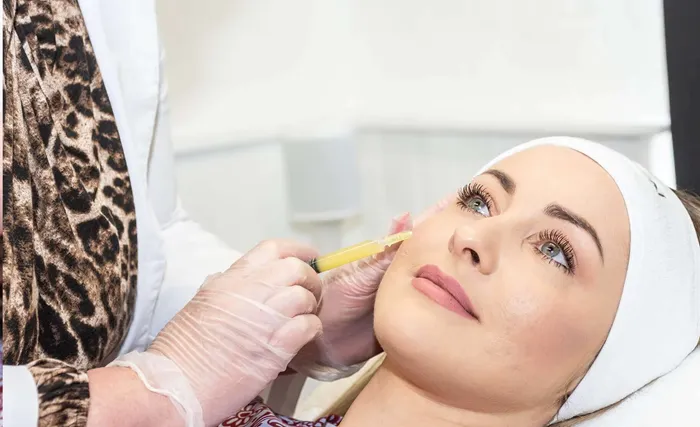Platelet – Rich Plasma (PRP) has revolutionized the fields of hair restoration and regenerative medicine. As a concentrated solution of a patient’s own platelets in plasma, PRP harnesses the body’s natural healing mechanisms to address a variety of conditions, with hair loss being one of the most common applications. In this article, we will explore the multifaceted functions of PRP, particularly in the context of hair restoration, and its expanding role in other medical disciplines.
Understanding PRP
Platelets and Growth Factors
Platelets are small cell fragments in the blood that play a crucial role in clotting and wound healing. When blood vessels are injured, platelets aggregate at the site of injury to form a clot, preventing excessive bleeding. In addition to their clotting function, platelets contain growth factors that promote tissue repair and regeneration.
Key Growth Factors in PRP
PRP contains several growth factors.
- Platelet-Derived Growth Factor (PDGF): Stimulates cell proliferation and blood vessel formation.
- Transforming Growth Factor (TGF): Promotes tissue repair and reduces inflammation.
- Vascular Endothelial Growth Factor (VEGF): Encourages the growth of new blood vessels.
- Fibroblast Growth Factor (FGF): Supports the growth and differentiation of fibroblasts, which are essential for tissue repair.
These growth factors work synergistically to accelerate the healing process and improve tissue function.
PRP in Hair Restoration
Stimulating Hair Follicle Growth
Prolonging the Anagen Phase
The anagen phase is the active growth phase of the hair follicle. PRP helps to extend this phase, allowing hair follicles to produce hair for a longer duration. Growth factors in PRP, such as PDGF and IGF – 1, act on dermal papilla cells, which are responsible for regulating hair growth. By stimulating the proliferation and activity of dermal papilla cells, PRP promotes the growth of new hair shafts. In cases of androgenetic alopecia, where the hair follicles are shrinking due to the influence of dihydrotestosterone (DHT), PRP can counteract this effect and rejuvenate the follicles.
Increasing Hair Follicle Density
PRP can also stimulate the conversion of dormant hair follicles into active ones. It does this by providing the necessary growth factors and nutrients that awaken the follicles from their resting state. As a result, the overall density of hair on the scalp increases, leading to a fuller and more voluminous appearance.
Improving Scalp Microenvironment
Enhancing Blood Circulation
VEGF, one of the key growth factors in PRP, is a potent stimulator of angiogenesis, the formation of new blood vessels. By promoting angiogenesis in the scalp, VEGF improves blood circulation to the hair follicles. A well – vascularized scalp ensures that hair follicles receive an adequate supply of oxygen, nutrients, and hormones, all of which are essential for their normal functioning. This enhanced blood flow also helps to remove metabolic waste products from the follicles, creating a healthier environment for hair growth.
Reducing Inflammation
Chronic inflammation in the scalp can contribute to hair loss. PRP has anti – inflammatory properties, mainly due to the presence of TGF – β. TGF – β helps to regulate the immune response in the scalp, reducing the production of pro – inflammatory cytokines. By minimizing inflammation, PRP protects the hair follicles from damage and promotes a conducive environment for hair growth.
Improving Scalp Microenvironment
Enhancing Blood Circulation
VEGF, one of the key growth factors in PRP, is a potent stimulator of angiogenesis, the formation of new blood vessels. By promoting angiogenesis in the scalp, VEGF improves blood circulation to the hair follicles. A well – vascularized scalp ensures that hair follicles receive an adequate supply of oxygen, nutrients, and hormones, all of which are essential for their normal functioning. This enhanced blood flow also helps to remove metabolic waste products from the follicles, creating a healthier environment for hair growth.
Reducing Inflammation
Chronic inflammation in the scalp can contribute to hair loss. PRP has anti – inflammatory properties, mainly due to the presence of TGF – β. TGF – β helps to regulate the immune response in the scalp, reducing the production of pro – inflammatory cytokines. By minimizing inflammation, PRP protects the hair follicles from damage and promotes a conducive environment for hair growth.
Functions of PRP in Different Medical Fields
Hair Restoration
In hair restoration, PRP is used to promote hair growth and improve hair density. The growth factors in PRP can stimulate dormant hair follicles and enhance the overall health of the scalp. PRP can be particularly effective for individuals experiencing androgenetic alopecia (male or female pattern baldness).
Orthopedics
In orthopedics, PRP is used to treat conditions such as tendinopathies, ligament injuries, and osteoarthritis. The growth factors in PRP can accelerate the healing of injured tissues and reduce inflammation. PRP can be injected directly into the affected joint or tissue to promote repair and reduce pain.
Dermatology and Aesthetic Medicine
PRP is also used in dermatology and aesthetic medicine to improve skin texture, reduce wrinkles, and enhance overall skin health. PRP can be combined with microneedling or other treatments to achieve optimal results. The growth factors in PRP can stimulate collagen production, leading to firmer and more youthful-looking skin.
Conclusion
Platelet – Rich Plasma (PRP) has a wide range of functions, from promoting hair growth and enhancing the success of hair transplant surgery to facilitating the repair of damaged tissues in orthopedics and rejuvenating the skin in aesthetic medicine. Its ability to harness the body’s natural healing mechanisms makes it a versatile and effective treatment option. As research continues to advance, we can expect to see even more applications of PRP in the medical field, further improving the lives of patients suffering from various conditions.
Related topics:
- How Much Effective Is PRP for Hair Loss: What You Need To Know
- The Cost of PRP for Hair Loss: A Comprehensive Guide
- Will Hair Grow Back After Stopping Blood Pressure Medication


